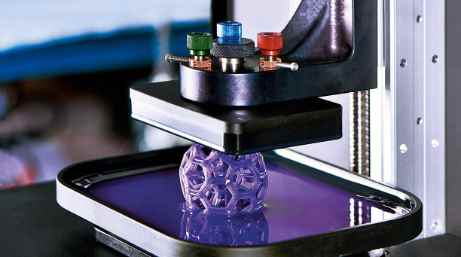3D printing technology is a rapidly evolving field that has the potential to revolutionize manufacturing and production. 3D printing allows for the creation of complex and customized objects using a variety of materials, and it has a wide range of applications, from prototyping to end-use production. In this blog post, we will explore some of the different types of 3D printing technology available.
Fused Deposition Modeling (FDM) is one of the most widely used 3D printing technologies. FDM uses a filament of material, typically plastic, which is heated and extruded through a print head to create the object. The print head moves in a specific pattern to build the object layer by layer. FDM is a relatively simple and cost-effective 3D printing technology and it is widely used for prototyping, creating parts and models, and end-use production.
Stereolithography (SLA) is another widely used 3D printing technology. SLA uses a liquid resin that is cured by a UV laser to create the object. The laser traces out the cross-section of each layer, solidifying the resin and building the object layer by layer. SLA is a highly precise and accurate 3D printing technology, which makes it ideal for creating detailed and complex objects.
Selective Laser Sintering (SLS) is a 3D printing technology that uses a laser to sinter a powdered material, typically plastic or metal, to create the object. The laser selectively fuses the powdered material, building the object layer by layer. SLS is a highly precise and accurate 3D printing technology, and it is widely used for creating complex and customized objects.
Digital Light Processing (DLP) is a 3D printing technology that is similar to SLA, but it uses a digital light projector instead of a laser to cure the resin. DLP is a highly precise and accurate 3D printing technology, and it is well-suited for creating detailed and complex objects.
Binder Jetting is a 3D printing technology that uses a liquid binder to selectively bond a powdered material, typically metal or ceramic, to create the object. The binder is selectively applied to the powdered material, building the object layer by layer. Binder jetting is a highly precise and accurate 3D printing technology, and it is well-suited for creating complex and customized objects.
Multi Jet Fusion (MJF) is another 3D printing technology that uses a combination of heat, pressure, and fusing agents to create the object. The fusing agents are selectively applied to the powdered material, building the object layer by layer. MJF is a highly precise and accurate 3D printing technology, and it is well-suited for creating complex and customized objects.
Conclusion
3D printing technology has come a long way and it has a wide range of applications in manufacturing and production. From FDM, SLA, SLS, DLP, Binder Jetting, and MJF, each type of 3D printing technology has its own unique advantages and disadvantages, and it is important to understand the different types of 3D printing technology available in order to choose the right one for your specific application.
Each type of 3D printing technology is suitable for different types of materials, precision and accuracy, complexity, and end-use. With the advancement in technology, the possibilities with 3D printing are endless, and it will continue to play a vital role in shaping the future of manufacturing and production.




Leave Comment